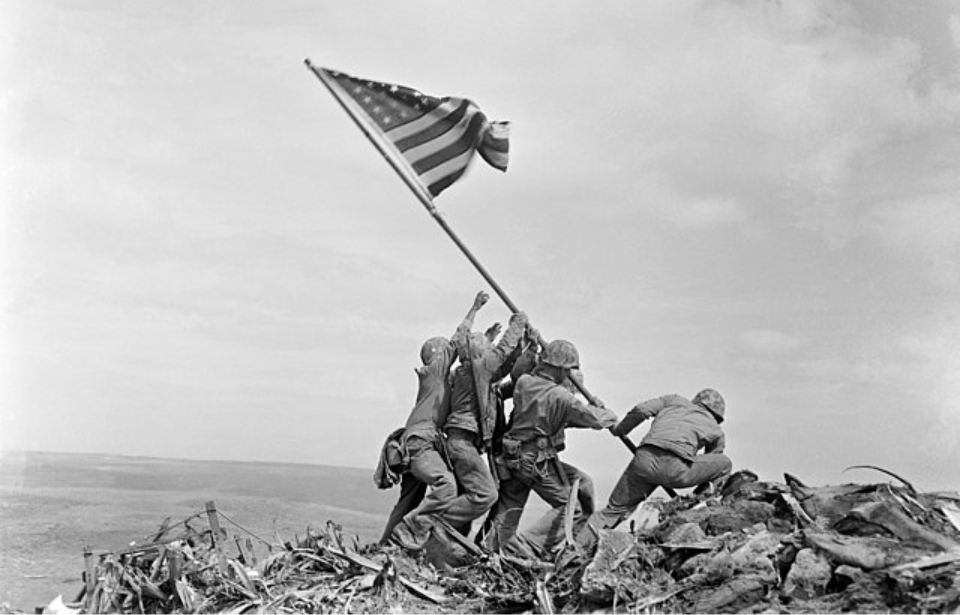For nearly two centuries, photographers have been using pictures to document the horrors of war. This has led to some of history’s most famous photos, yet many are unaware of the events that led up to them. Here are the real stories behind nine of the most iconic war photos ever taken.
The Valley of the Shadow of Death (1855)
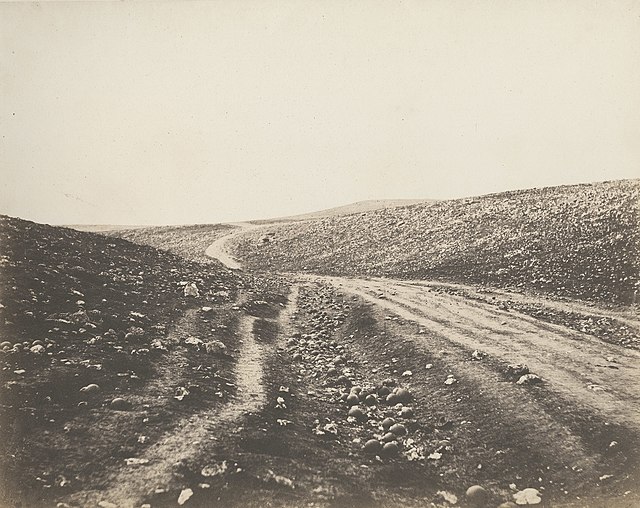
Early war photography was limited in scope, given the infancy of the technology, but that doesn’t mean the images aren’t any less jarring. British photographer Roger Fenton was sent to cover the fighting between Britain and Russia during the Crimean War. He wasn’t permitted to photograph the combat as it happened, but did cover its aftermath.
The area pictured above was dubbed “The Valley of the Shadow of Death” by the British, due to the amount of shelling that occurred there. It was often covered with cannonballs fired during the fighting between the two sides.
While considered the “first iconic photograph of war,” some question its authenticity, as there’s a secondary photo of the same area without cannonballs strewn across the ground. After some investigation, it was determined soldiers likely gathered and placed them in ditches to reuse later.
Raising the Flag on Iwo Jima (1945)
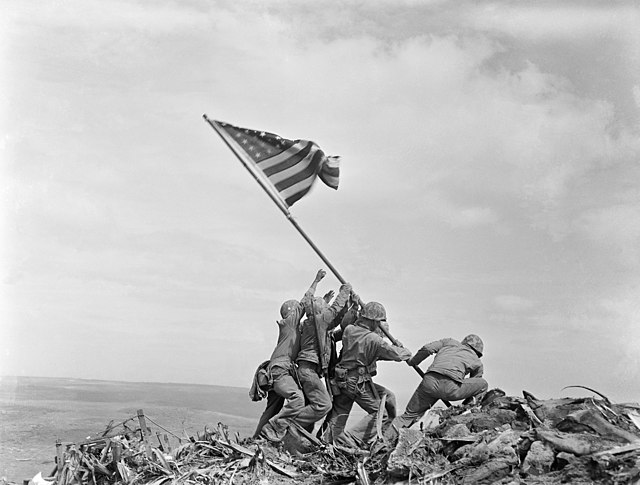
Arguably the most recognizable photograph from the Pacific War is Joe Rosenthal’s Raising the Flag on Iwo Jima. The image was snapped by the Associated Press photographer atop Mount Suribachi on February 23, 1945, and is a symbol of America’s resolve during their fight against the Japanese.
On that day, US Marine commander Col. Dave Severance was leading E Company, 2nd Battalion, 28th Marines, 5th Marine Division during the Battle of Iwo Jima. The fight was important, as the US needed the island’s strategically-placed airstrips.
After defeating the Japanese, Severance sent his company to the top of Mt. Suribachi to plant the American flag, an action initially photographed by Sgt. Louis Lowery. However, Secretary of the Navy James Forrestal wanted the flag as a memento, so the commander sent a second group up the mountain to install another flag. It was this effort that Rosenthal captured on film.
V-J Day in Times Square (1945)
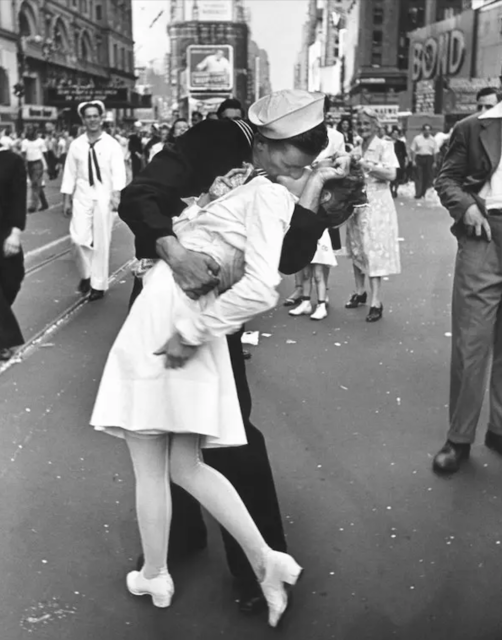
Many are aware of this photograph by Alfred Eisenstaedt, taken in Times Square on August 14, 1945. It depicts a US Navy sailor kissing a stranger (a dental assistant) on Victory Over Japan Day – better known as “V-J Day” – in New York City.
President Harry Truman was anticipated to announce the end of the war that evening, and a spontaneous celebration occurred in Times Square. According to Eisenstaedt, he was unable to collect the names of those he was photographing, given the speed at which everything was happening. All that’s known for certain is this image was shot south of 45th Street, looking north from where Broadway and Seventh Avenue converge, around 5:51 P.M.
Over the years, there have been attempts to identify the two individuals. Unfortunately, their names (and faces) remain under speculation to this day.
Flower Power (1967)
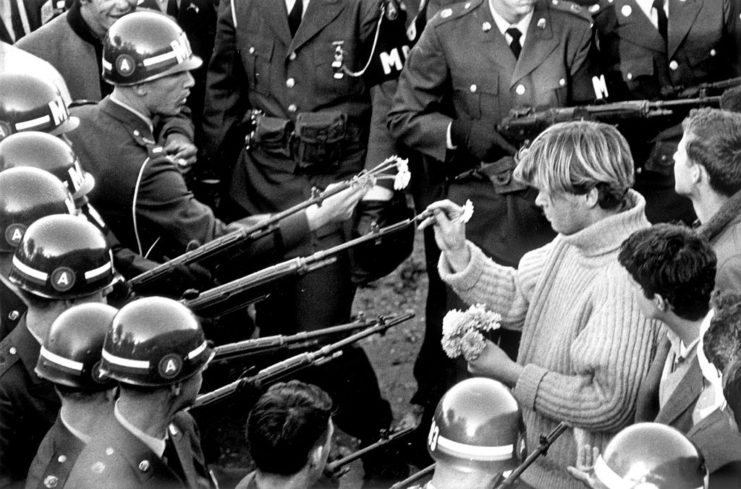
The March on the Pentagon was a large-scale demonstration against the Vietnam War on October 21, 1967. More than 100,000 protestors attended a rally at the Lincoln Memorial, after which 50,000 marched to the Pentagon. It was there The Washington Star photographer Bernie Boston snapped Flower Power, showing George Harris placing a carnation into the barrel of a soldier’s M14 rifle.
The March on the Pentagon was organized by the National Mobilization Committee to End the War in Vietnam. Those who participated were met by soldiers from the 503rd Military Police Battalion, and it was at this point Harris stepped forward and started placing flowers in the M14 barrels.
The photo is seen as a symbol of the Flower Power movement, which began as a way to protest against the Vietnam War. The movement used non-violent objects, as opposed to violence, to share its opposition.
“Tank Man” (1989)
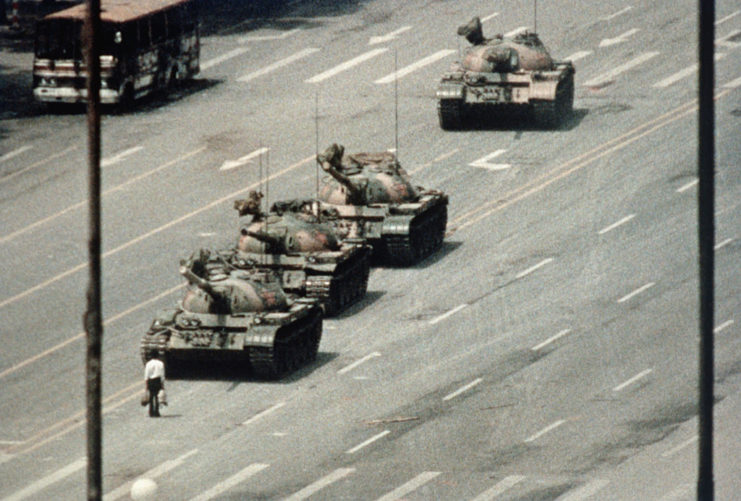
The violence in Beijing in 1989 shocked the world. The student-led protests aimed to bring democracy to China, and many held firm, despite being faced with armed troops who fired at those blocking the military advance into Tiananmen Square. On June 4, 1989, the Chinese government declared martial law and sent the People’s Liberation Army to occupy central Beijing. Thousands were killed and even more injured.
The most iconic image of the incident was taken the next day, when an unknown man stood in front of a row of tanks leaving Tiananmen Square. He continually shifted his position as the tanks tried to manoeuvre past him. Sadly, there is no reliable information regarding the fate of the protestor, as China has censored the image and the accompanying events.
Kuwaiti oil fires (1991)
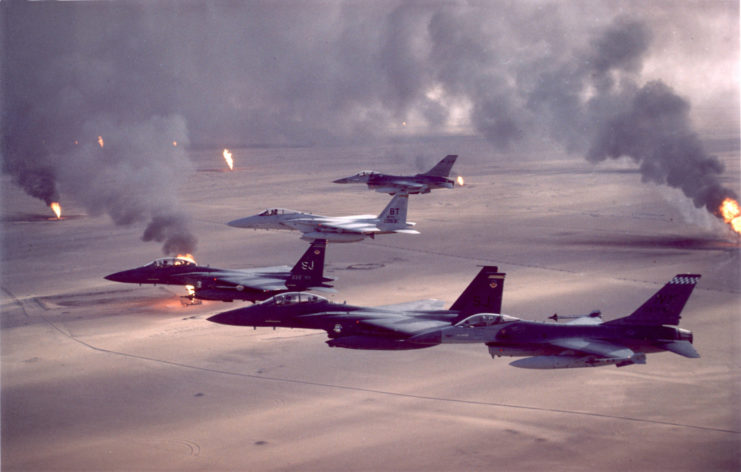
With Iraqi forces retreating from Kuwait following the International Peacekeeping Coalition’s invasion in 1991, Saddam Hussein ordered the destruction of the country’s oil fields. It’s reported between 605 and 732 oil wells, along with an unspecified amount of oil-filled areas, were destroyed by the Iraqi military.
While the fires began in January and February 1991, the first wasn’t extinguished until April, and the last wasn’t capped until November 6. While concrete figures aren’t available, it’s believed between four and six million barrels of crude oil were burnt per day, along with between 70 and 100 million cubic meters of natural gas.
More from us: Photos That Showcase the Durability of American Aircraft During World War II
This image, taken by the US Air Force, shows F-16A, F-15C and F-15E fighter jets patrolling Kuwait during the fires. The smoke not only caused a Royal Saudi Air Force C-130H to crash, but provided the Iraqi forces a smokescreen during the Battle of Phase Line Bullet.
